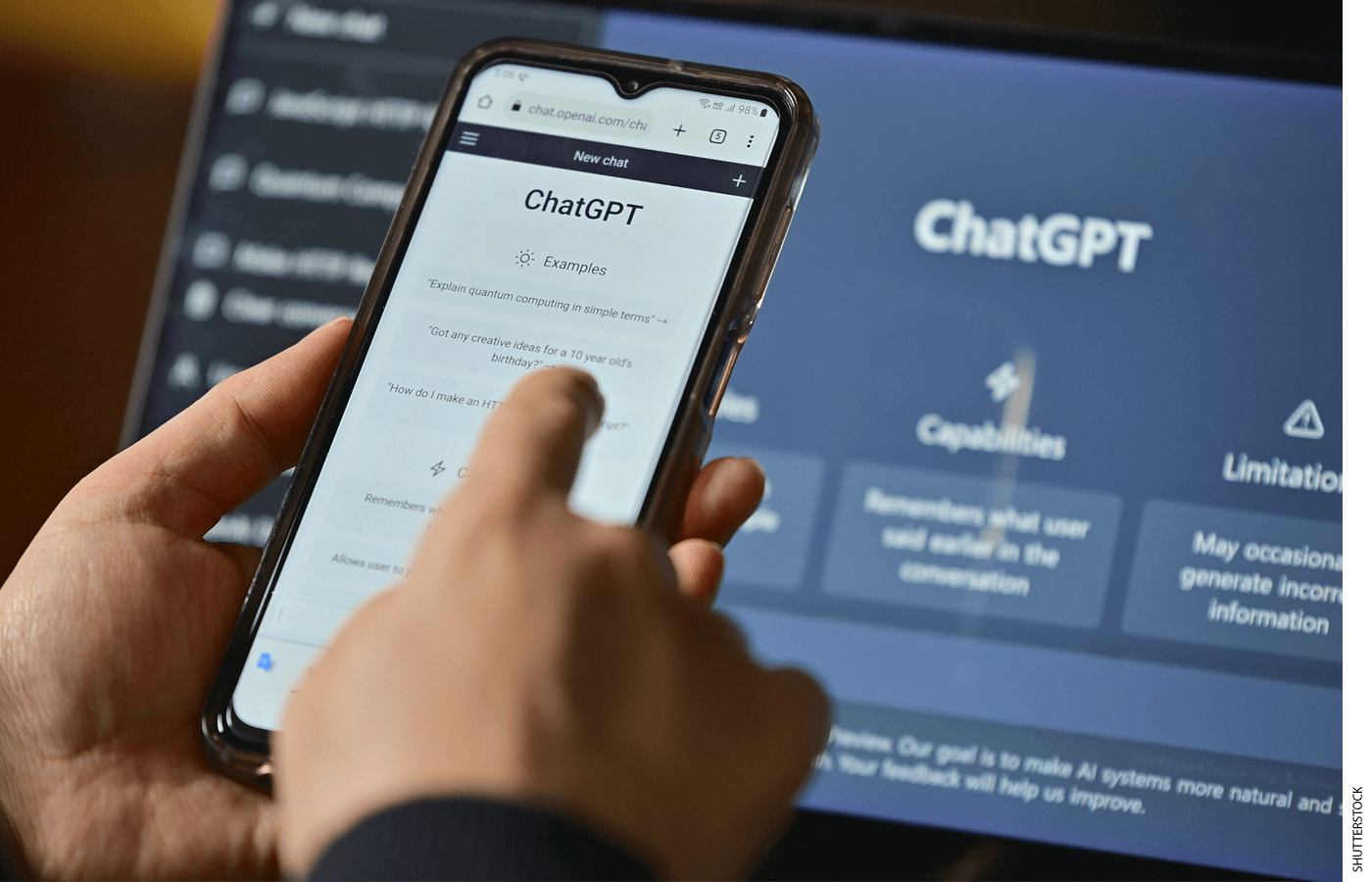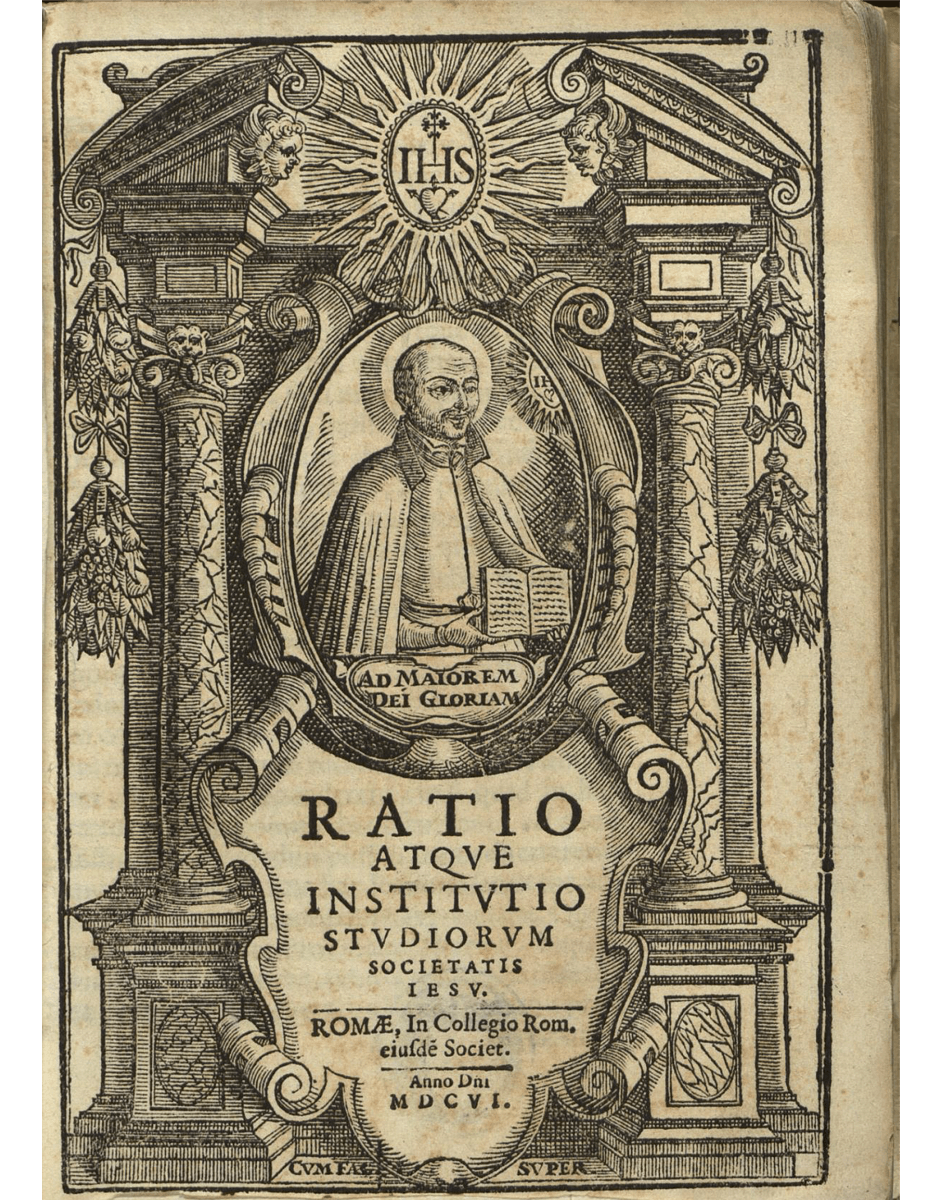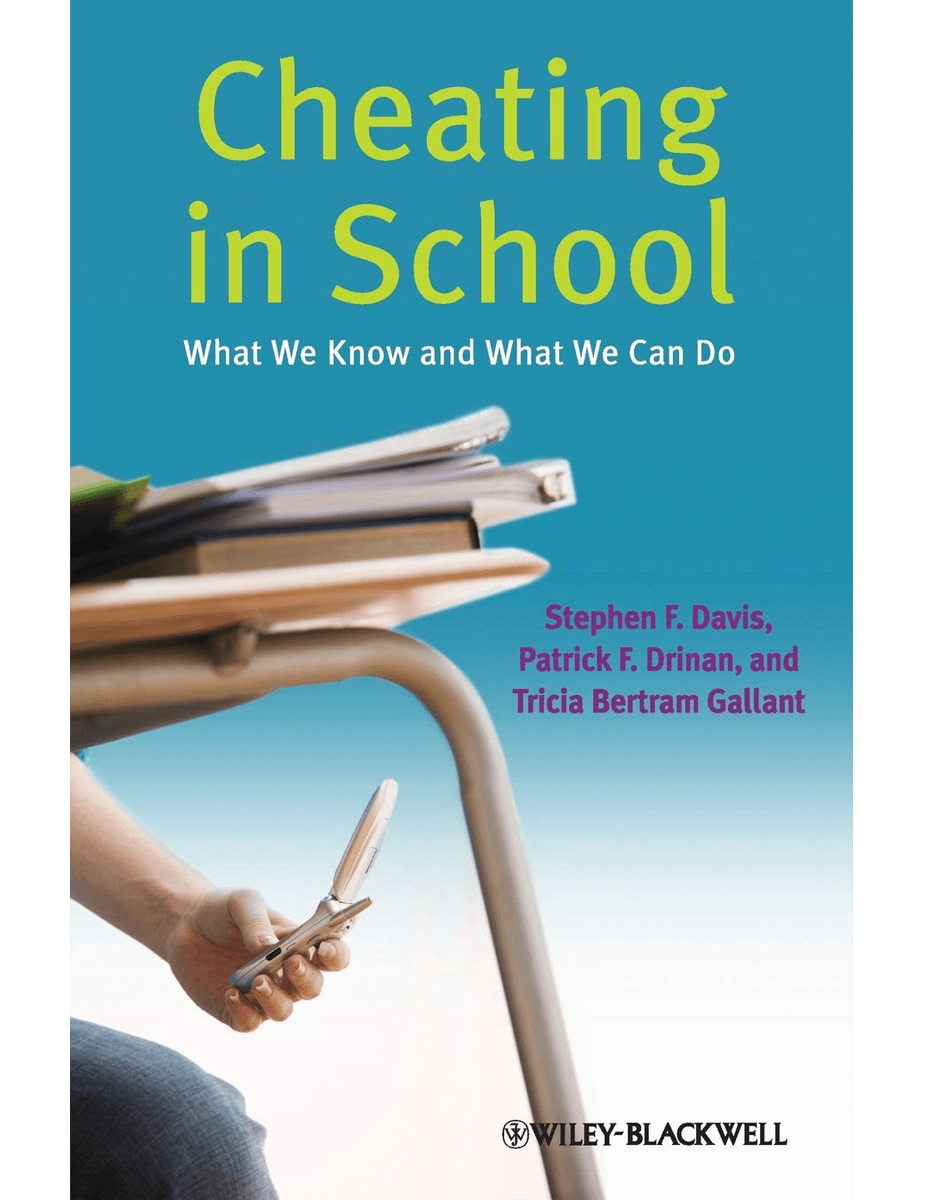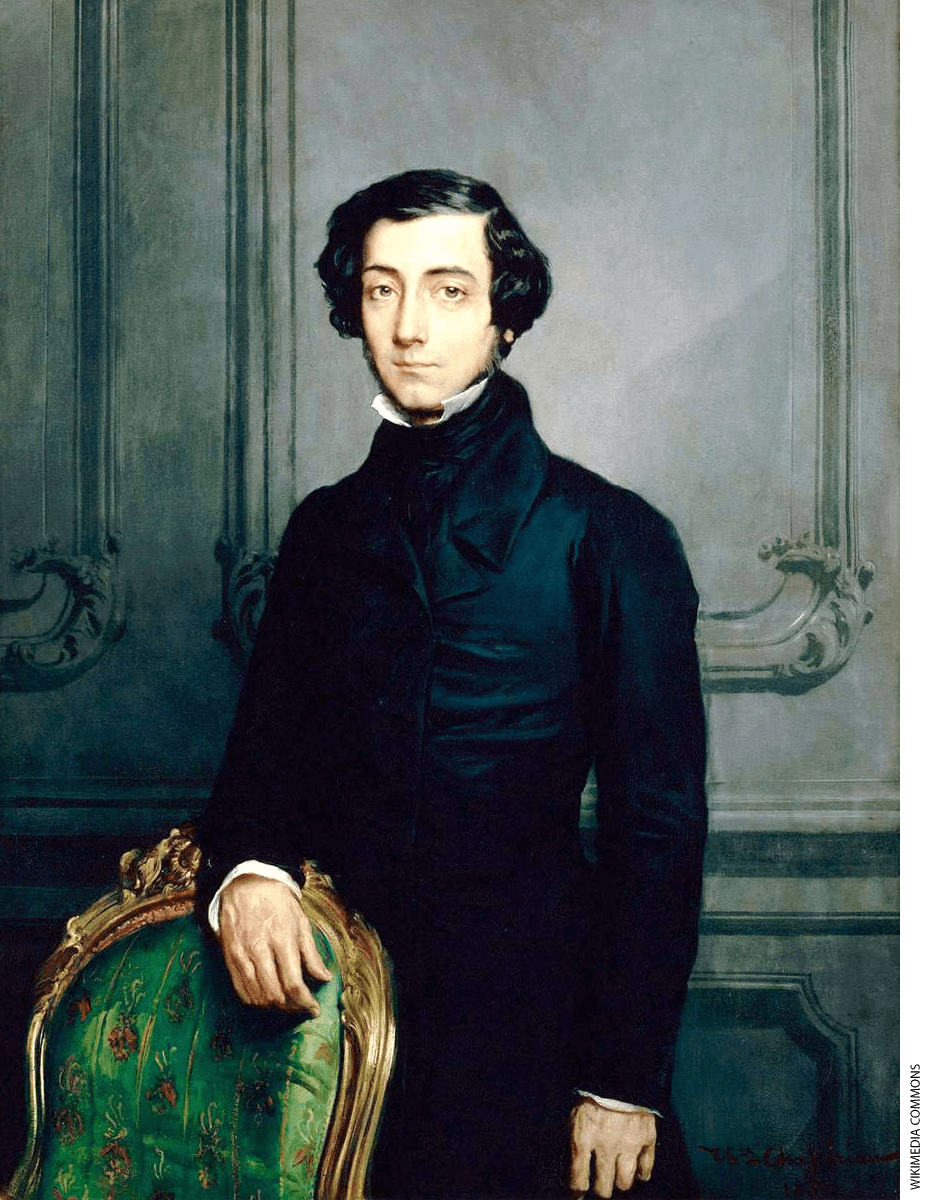
“It’s everywhere,” George Mooren, a sophomore at Kimberly High School in Kimberly, Wisconsin, told me when I asked about the prevalence of cheating at his school. Where a handful of students in every class used to take a sideways glance during a test or complete homework together, he and his older brother JR, a senior, said it’s now the majority of students the majority of the time.
The pair described cheating as both more common and more wide-ranging, meaning greater numbers of students are cheating on a broader range of assignments. After school, students send around photos of homework or problem sets on Snapchat. They prompt ChatGPT to craft them an essay. JR told me about taking an online test in class and seeing almost every one of his classmates type questions verbatim into Google’s search bar.
Before the advent of large language models, the technological breakthrough driving the latest wave of artificial intelligence, cheating remained a secondary or even tertiary concern in education, though the occasional scandal did make national headlines. In 2002, for example, the New York Times published a story about a teacher who failed students for copying portions of a project from the Internet and how a parent coalition then tried to force the educator to award passing grades. And many readers will recall the Operation Varsity Blues cheating scandal that saw 53 people charged for lying, cheating, and scheming their children into prestigious schools.
Even so, these news stories are not common. Why discuss cheating when we can kvetch about book bans or national test scores? Perhaps, since cheating will always exist, education reformers have never bothered to confront it. Maybe we ourselves look back with a guilty grin at our own shenanigans. In one academic survey, a working administrator joked, “You’re telling me in your entire education you didn’t look at somebody else’s paper at least once? Give me a break! We’ve all been there.” Or it’s possible that reformers assume that the academic and learning consequences of cheating are minimal, so they focus on other efforts to improve outcomes.
These justifications for disregard are mistaken. In previous eras, a student’s decision to hand-copy passages from an encyclopedia entry about the Boston Tea Party likely wasn’t worth the effort of enforcement. But the tools students have at their disposal for academic dishonesty have changed, and so have the consequences. When students can have entire essays crafted for them in a keystroke, a lot of learning is lost. When classes move online, students can fake a syllabus’s worth of content, not just a handful of homework activities.
When students can readily slip a phone out during class and access the entire Internet, does that not discourage them from doing the hard work of learning content? Does it explain, at least partly, our nation’s faltering civic and scientific knowledge? When the system treats cheating with disinterest, what does that communicate to students? Have the normalization of online learning and the advent of ChatGPT contributed to our nation’s lagging response to learning loss?
These questions and their answers are beyond the scope of one essay but should signal that cheating is a real issue with real consequences. Thankfully, there are policies that schools can implement to decrease its prevalence, even if it’s a phenomenon we cannot entirely eradicate.

A Brief History of Cheating
It’s not hard to imagine little Willy Shakespeare in his grammar school passing around the day’s quotation from Holinshed’s Chronicle under his desk, especially considering the Bard did in fact lift lines and entire passages word-for-word from Holinshed and other sources for use in his plays.
Cheating is indeed an old, storied phenomenon. One of the first known cheating scandals reaches back to a Chinese civil service examination called the keju, which was first administered during the Sui dynasty (581–618). In 1397, the story goes, the top scorers on the keju all hailed from the empire’s southern regions, which prompted accusations of cheating, protests, and, in turn, an official investigation. But when the emperor concluded that the government examiners had themselves cheated in their investigation, he meted out punishments, an exile, and even an execution. Recently, a matchbox-sized answer booklet from that era that examinees slipped into the test sold at auction.
For as long as we’ve had formal schooling, teachers and administrators have fretted about cheating. The Jesuits’ Ratio Studiorum is one of the first education documents to attempt to systematize schooling en masse with delineated curriculum and instructional best practices. In it, we can see how technology and education philosophy at the turn of the 17th century shaped the way students were tested and how prevailing evaluation practices limited the possibilities for cheating.
In 1599, when the Jesuits produced their guide, only large publishing houses could afford mechanical printers. Paper was expensive, at least by today’s standards, so teachers couldn’t print multiple copies of standardized exams. Moreover, teachers of that era didn’t ask students to answer multiple-choice questions or respond to interpretation questions at home. They were more interested in a child’s ability to recite important passages from Virgil or summarize Xenephon’s arguments about benevolent tyrants. Students faced oral examinations at a semester’s end to prove they had learned the content and could defend their views. Regular declamations during the semester required them to recite memorized passages in front of the class. And their rare written examinations came in essay form.
In a section on paper examinations, the Ratio Studiorum warns students that “seat-mates must be careful not to copy from one another,” because if “compositions are found to be identical or even alike, both will be open to suspicion.” It also suggests that teachers implement rules such as “any student who for good reason is permitted to leave the room after writing has begun, must deposit with the prefect or his substitute his theme outline and whatever he has written.”

Even without these preventative measures, though, cheating would simply be a far harder affair in such an environment. Cheating on a declamation or handwritten essay is more difficult than sneaking a peek at a fellow’s scantron or the phone in your lap. Affordable printers, paper, and pencils allowed for standardization that enabled widespread cheating. Later, the advent of the Internet and, most recently, artificial intelligence, heralded another sea change.
Over the past 50 years, cheating has increased significantly. In a series of surveys conducted in 1969, 1979, and 1989, researcher Fred Schab of the University of Georgia found that cheating in all forms—from using cheat sheets on tests to copying a friend’s homework—effectively doubled over the two decades. Jump forward to modern day, and recent surveys find that 95 percent of students admit to having cheated in the previous year, and 72 percent report using AI to assist with their schoolwork.
After the release of ChatGPT in November 2022, concerns about cheating in high school and college spiked. A spring 2023 survey from Stanford University might have quelled some of those fears, finding no increase from the pre- to post-GPT eras. But I have my doubts. In my conversation with JR, he told me that ChatGPT use among his classmates only really took off this last school year, 2023–24.
“It took a year for students to realize just how much they could use it on,” he said. If that is true nationwide, then Stanford’s survey ended while students were still figuring out how to exploit the new technology. Moreover, even if the rate of student cheating remains consistent, the range of assignments on which they use it has almost certainly increased. They’ve upgraded from reading SparkNotes for inspiration to asking chatbots to write essays for them.

Why Do Students Cheat?
Clearly, cheating has gotten easier and thus more tempting. But that doesn’t explain why students are so willing to engage in academic dishonesty to begin with. The answers to that question suggest measures for curtailing the prevalence of cheating.
A common argument in the literature is that academic stress and high stakes exams foster the scenarios wherein cheating occurs. In a series of in-depth interviews with high school juniors and seniors enrolled in advanced coursework, Lyn Taylor and colleagues concluded that “multiple pressures to achieve from parents, peers, and teachers and self-created pressures” drive students to act in dishonest ways. Angela D. Miller and colleagues likewise argue that competition and pressure to “do it all” incentivize corner-cutting. Parents and teachers put so much pressure on students to reach unachievable ends on standardized exams that they follow dishonest paths almost by necessity.
I posited this thesis to the Mooren boys, who responded with chuckles and looks of incredulity. “It’s laziness,” they countered. To defend their point, they noted that there was less cheating in their AP classes, where academic stress was highest, compared to standard classes. And indeed, surveys have found that high-achieving students do cheat less.
In reality, students cheat for innumerable reasons. For example, in a review of research, Donald McCabe points to personality types, self-esteem, and gender differences as notable factors that influence a student’s decision to cheat. In a 1993 survey that McCabe administered, he found that among a number of factors, the presence of peers cheating was the strongest. And in a 1997 follow-up, McCabe concluded that contextual factors (presence of honor codes, consequences, and testing environments) were stronger determinants than individual factors (gender, individual beliefs, age). An institution’s policy on and responses to academic dishonesty matter far more than any single student’s reason for cheating.
A meta-analysis investigating which factors correlate with a propensity to cheat found that it’s all of the above: laziness, stress, and a host of other reasons. Ball State University’s Bernard Whitley found a number of conditions that predict academic dishonesty: “moderate expectations of success, having cheated in the past, studying under poor conditions, holding positive attitudes toward cheating, perceiving that social norms support cheating, and anticipating a large reward for success.” In other words, if students expect to fail, they’re more likely to cheat. If they learned under unideal circumstances, they’re more likely to cheat. If they carry flippant attitudes toward cheating, they’re more likely to cheat. A desire for success, the easy course of action, impressing peers, forgetfulness—all could be reasons to cheat, depending on the student.

In conversation, Brett Ryan, a charter school teacher in Santa Clarita, California, offered his thoughts on why he and his colleagues have seen an uptick in cheating: “We make learning so clinical and formulaic that it’s like filling out paperwork for them, and they just want to get it done. We give them so many tools with tech integration that makes cheating easier; there is such an emphasis on collaboration and group work that so many students don’t even know how to work independently; and there are simply no consequences for cheating.”
In their book Cheating in School: What We Know and What We Can Do, authors Stephen Davis, Patrick Drinan, and Tricia Gallant note that, regardless of students’ reasons for cheating, our current education environment presents them with few disincentives to acting dishonestly. The short-term gain is obvious, while consequences are essentially nonexistent. What’s more, students may lack a clear sense of the long-term tradeoffs—for example, that unlearned content now might result in difficulties later, or that dishonest habits will serve them poorly as adults.
All these factors have created a new perfect equation to incentivize cheating. Students want good grades. They have an easy path to attain them and little incentive to take the honest route. We can lecture students about the learning they will gain through engagement with content, discuss the ethical implications of cheating, and lay out how this behavior will serve them poorly as adults, but as long as strong incentives remain, cheating will continue. If appeals to the better angels of our nature worked, humans would have stopped stealing and swindling long ago.

What’s to Be Done?
School responses to cheating generally fall into two buckets: addressing the cause or toggling the incentives.
In the equation previously described—high desire plus easy routes plus few disincentives—solutions that focus on the cause of the misbehavior try to create scenarios in which students no longer have a desire to cheat. Mollie K. Galloway of Lewis & Clark College argues that we must create schools and communities that “value academic achievement and credentialing” over and above “learning or development.” To do so, communities need to “explore how definitions of success are historically and culturally embedded” and redefine “what they mean by success.” These lofty goals may be easier to write about than they are to achieve.
In practice, such calls often result in nothing more than a lowering of standards. An Edutopia article, for example, implores teachers to use homework passes and forgo formal exams. If work is more meaningful—prioritizing projects and essays over tests and repetitive practice—students will realize the importance of the activities and so develop an intrinsic motivation toward learning that supersedes (or at least counterbalances) their desire for extrinsic rewards.
Such recommendations are without doubt misguided. When I pitched this idea to Trevor Bohn, an English teacher in Potosi, Wisconsin, he said even if teachers’ expectations for students are reasonable, “life is stressful. If we are teaching kids properly, they should be developing resilience to cope with the stress.” And George Mooren asserted that no matter how meaningful a teacher tries to make the work, some kids will always want to cheat. If you give them choices over their assignments or allow them to opt for projects instead of tests, students always “pick the easiest option,” he said.
Ultimately, effective learning is inherently effortful. Humans are primed to learn a few things naturally—spoken language and gross motor movements, for example—but academic content requires focus, attention, and study. And a recent meta-analysis found that most people don’t much enjoy difficult thinking any more than they enjoy hill sprints, push-ups, or eating their spinach. Understood in this light, recommendations to make learning more meaningful or less stressful necessitate making it less effective.

Moreover, as noted earlier, students have multifarious reasons for cheating. We cannot hope to create some utopian environment that addresses them all. Schools cannot control student motivations, but they can toggle incentives and policies to alter behavior. Accordingly, they must both make cheating more difficult and provide disincentives to steer students away from it.
JR Mooren described how some teachers at his school are thinking outside the box to create cheating-proof assignments. Keeping students from cheating during tests is easiest. Teachers can simply ban phones and computers. JR assured me that students can still find ways to cheat during paper tests, but it’s harder to do so. It’s more difficult to see a classmate’s test several desks away or slip in an answer key in unnoticed. And if teachers create multiple versions tests, answer keys won’t help a student cheat.
Both Mooren boys noted that tests are the best method to winnow out which students have legitimately completed homework and daily activities and which have cheated their way through the unit or semester. The students who cheat on practice problems bomb the test, because they haven’t actually learned the material.
These scenarios require that teachers actively monitor test-taking. If educators sit behind their desks grading papers, it reopens an easy pathway to cheating. In one interesting small study, researcher Jarret Dyer found that proctored environments at the post-secondary level reduced the prevalence of cheating. No surprise there. But students in proctored settings were more likely to state on surveys that cheating was unacceptable. Active monitoring and enforcement communicated to students that a teacher or school really believed that cheating was unethical, and students accepted the message.
According to the Mooren boys, students at their school are now required to complete essays in person, on demand, and by hand.
There are ways to check for AI usage when students write essays outside of class. When I was teaching, I’d ask a student I suspected of using ChatGPT to define a few of the “big words” they’d used in an essay. Editing history in Google Docs can expose a student who copied and pasted their essay. AI-checking software does exist.
All of these methods are imperfect, though. A student may use a thesaurus to find a fancy word and subsequently forget its meaning. Students can type out a ChatGPT essay word by word rather than cutting and pasting it from a browser. And AI-checking software is notorious for false positives. With such imperfect detection methods, it’s almost impossible to accuse a student of academic dishonesty on essay writing with certainty. The only way to ensure students complete an essay themselves is to do it the old-fashioned—dare I say Jesuit?—way.
EdNext in your inbox
Sign up for the EdNext Weekly newsletter, and stay up to date with the Daily Digest, delivered straight to your inbox.
Other kinds of homework are harder nuts to crack. How can a teacher know for sure that kids are answering questions or completing problem sets themselves? Still, many teachers are finding ways to assign homework that’s difficult to cheat on. The Mooren boys told me about teachers who assign readings or even pre-recorded lectures and explanations as homework—a variation on the flipped classroom—and follow up with mini-quizzes the next day for accountability. For example, a teacher may assign a reading on the tale of Narcissus and open the next class with a quick, five-question quiz or a free-response question, allowing students to use notes they took. Or a teacher may model in a video how to complete a physics problem, which students must then complete in class.
On top of such practices, it’s also imperative that students face some sort of consequence if they’re caught cheating. The standard teacher line is that any child caught cheating will receive a zero, no exceptions. Both JR and George told me that many of their teachers threatened such consequences. But both also told me that they had never actually seen a teacher pull a student’s test and assign a zero. As a student, I remember hearing that line, and as a teacher, I heard colleagues boast about their stringent cheating rules—but they rarely enforced them. A student told one surveyor that most students don’t know “what the consequences are,” because “not a lot of people who have cheated have faced the consequences.”
Instead of using drastic measures, teachers would do well to remember the admonition of Alexis de Tocqueville that “when justice is more certain and more mild, it is more efficacious.” If students face steep but unlikely consequences, the incentives to cheat remain high. They risk getting a zero, but the likelihood of their being caught is close to nil, so why not? Surely, if a teacher finds clear evidence that a student copied—I found sample essays online that my students turned in as their own—a teacher can assign a zero. But if there’s light chatter during a test, or a student is caught looking about, teachers can dock individual points from students’ scores—consequences that are certain but mild—to make disincentives more effective.
Honor codes are also a common school response to cheating. Some research has found no correlation between the presence of honor codes and rates of cheating at schools, but other studies are more promising. Ultimately, honor codes are most effective when schools and teachers not only post the codes, but also teach about them, discuss them with students, refer to them, and ultimately enforce them. The goal is to shift student perceptions and beliefs about cheating, which requires a school to follow through on its code of conduct.
Ultimately, combatting cheating requires a multifaceted approach. It all comes back to the incentives equation. There are simply too many reasons students cheat to sufficiently address them all. We cannot create a kumbaya environment where no kid ever wants to copy homework or peep at another kid’s test. Instead, schools and teachers must make it more difficult to cheat. That means rethinking homework, returning to handwritten tests, emphasizing end-of-course exams, and banning phones, tablets, and laptops during assessment or work time. And schools must implement and administer consequences when students are caught.
If the punishment for cheating is “certain but mild,” a student’s cost-benefit analysis changes. Cheating requires far more effort and risk to achieve an increasingly uncertain end. Certainly, some students will still try to behave dishonestly, but far more will follow the more arduous but preferable path: actually learning the content.
* * *
School improvement is an incremental game. There never has been and never will be any policy that will alone bring about some educational utopia. Instead, an effective reform agenda needs an “all of the above” approach to move the dial on student achievement higher and higher, little by little. Curtailing academic dishonesty in schools will not fix American education. But it’s a surmountable problem with easily implemented policy solutions that will surely nudge our nation’s students toward greater learning. There’s no cheat code to make it easier.
Daniel Buck is an assistant principal at a charter school in Wisconsin, a senior visiting fellow at the Fordham Institute, and the author of the book What Is Wrong with Our Schools?
This article appeared in the Winter 2025 issue of Education Next. Suggested citation format:
Buck, D. (2025). From Crib Sheets to AI Cheats, Everyone’s Doing It: In the age of artificial intelligence and cell phones, cheating in high schools is rampant. Education Next, 25(1), 8-15.


